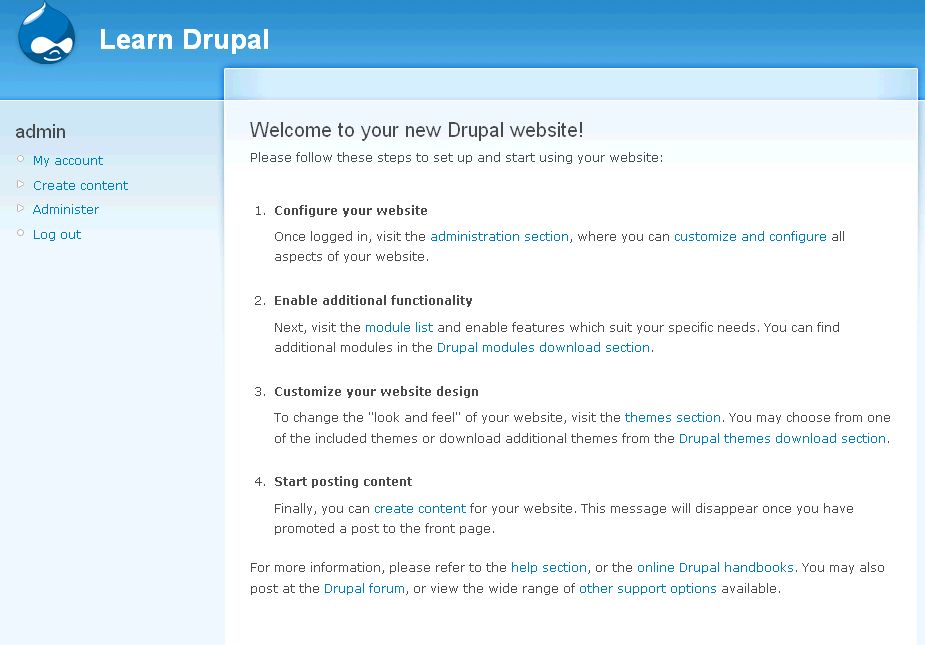Welcome to part 3 of our tutorial on building a website with Drupal 6. In part 1 we did a brief introduction, and in part 2 we installed Drupal. As we go through this tutorials I am building a Drupal resource site called Learn Drupal. So our website so far looks like this:
(You can click on the images for larger views)
In this installment, we’re going to further configure our website and learn more about the administrative back end of a Drupal website. So log in to the website with your admin username and password. On the left side is a navigation bar, and we’re going to click on “Administer” and look at the admin back end.
Continue reading “Building a Website with Drupal 6 – Part 3: Configuring your Site”



